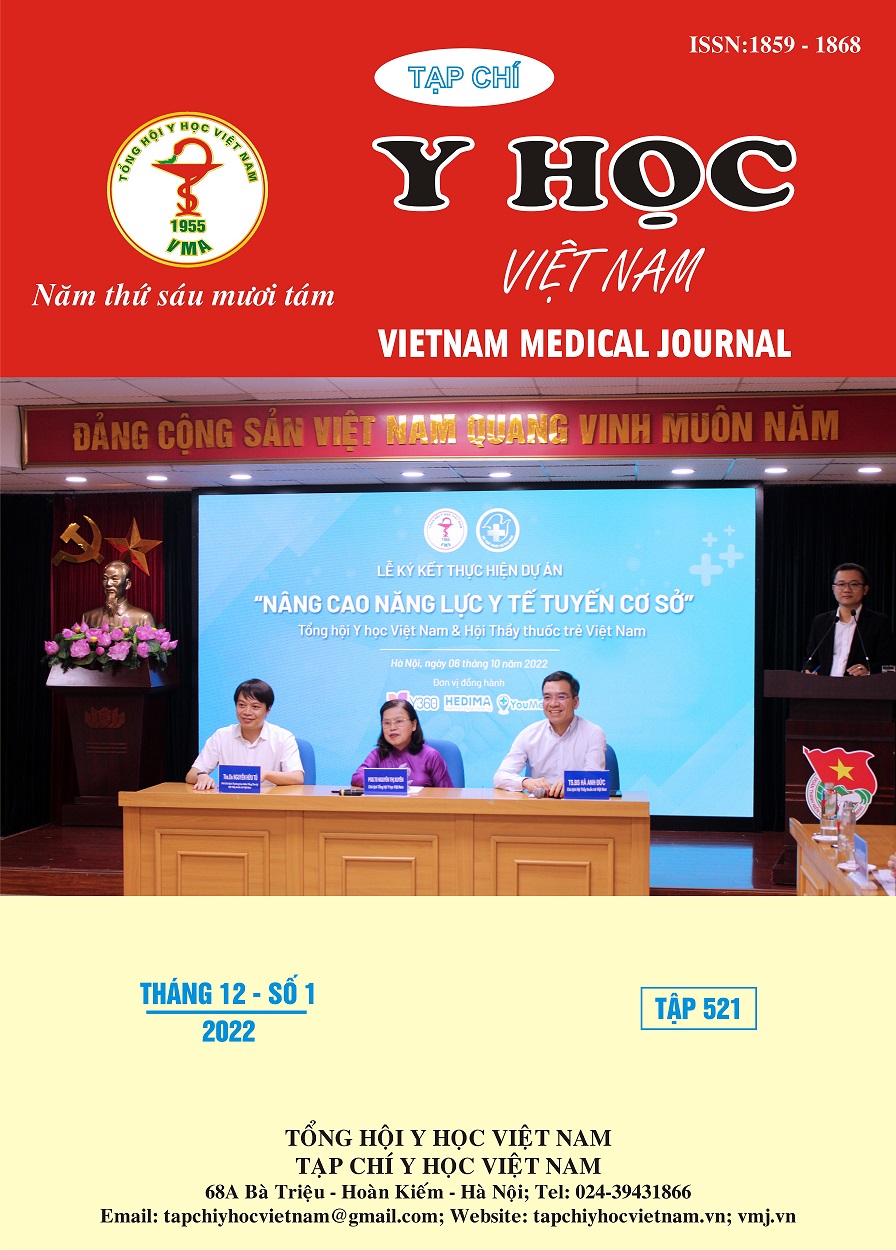STUDY THE CLINICAL FEATURES, X-RAY OF MAXILLARY ANTERIOR TEETH WITH PERIAPICAL CYSTS OF PATIENTS AT HO CHI MINH CITY ODONTO-MEDICINE AND PHARMACY
Main Article Content
Abstract
Background: The typical radiographic appearance of a periapical cyst is a radiolucent, circular or oval region with well-defined boundaries surrounding the apex or lateral to the apex of a pulp-dead tooth or in the corresponding region. the apical response of a pulp-dead tooth that has been extracted. Currently, with the development of imaging techniques, CBCT film has been used more and more commonly in the diagnosis and evaluation of the effectiveness of periapical cyst treatment. Objective: Description of subclinical characteristics (CT Conebeam, pathology) of maxillary anterior teeth with periapical cysts of patients at the Hospital of Odonto-Stomatology in Ho Chi Minh City and Can Tho University of Medicine and Pharmacy Hospital. Materials and methods: During the study period from May 2020 to February 2022, the number of patients who met the criteria for sampling and re-examination was 45 patients with 49 periapical cysts related to 51 etiological teeth. Use CT Conebeam and histological results of pathology to evaluate. Results: 49 periapical cysts involved 51 maxillary anterior teeth 51% root cysts involved maxillary lateral incisors (R12: 31.4%, R22: 19.6%), followed by teeth middle door (R11: 17.6%, R21: 25.5%). The average size is 1.05 0.38 cm, of which the largest cyst is 2.57 cm in diameter, the smallest is 0.49 cm. On pathological results: 57.1% of fluid in the cyst contains pus, 87.8% contains liquid fluid, 100% of connective tissue is infiltrated with inflammatory cells. 100% of the follicles are lined with non-keratinized squamous epithelium, of which 6.1% are convex and concave. Thin epithelium accounts for 59.2% and has 1 cyst containing hyaline bodies (2%), 2 cysts with cholesterol fissure (4.1%). Conclusion: The average size is 1.05 0.38 cm, in which the largest cyst is 2.57 cm in diameter, the smallest cyst is 0.49 cm. All 49 cases showed infiltration. Infected inflammatory cells into the cyst wall and lined with nonkeratinized stratified squamous epithelium (100%). The epithelial layer is thin (59.2%).
Article Details
Keywords
periapical cyst, x-ray, pathology
References
2. Trần Thanh Phút (2017), Nghiên cứu đặc điểm, cận lâm sàng và đánh giá kết quả điều trị phẫu thuật nang xương hàm do răng tại Bệnh viện Mắt - Răng Hàm Mặt Cần Thơ, Luận văn tốt nghiệp Bác sĩ Nội trú Răng hàm mặt, Trường Đại học Y Dược Cần Thơ.
3. Phạm Quốc Tới (2015), Nghiên cứu đặc điểm, X-quang và đánh giá kết quả phẫu thuật điều trị nang quanh chóp tại Bệnh viện Mắt - Răng Hàm Mặt Cần Thơ, Luận văn tốt nghiệp Bác sĩ Răng hàm mặt, Trường Đại học Y Dược Cần Thơ.
4. Chen J.H, Tseng C.H, Wang W.C., et al (2018),“ Clinicopathological analysis of 232 radicular cysts of the jawbone in a population of southern Taiwanese patients”, Kaohsiung Journal of Medical Sciences, 34, pp. 249-254.
5. Cohen R.S, Goldberger T., Merzlak I et al (2021), “The Development of Large Radicular Cysts in Endodontically versus Non-Endodontically Treated Maxillary Teeth”, Medicina, 57, pp. 991.
6. Deana N. and Alves N. (2017), "Cone Beam CT in Diagnosis and Surgical Planning of Dentigerous Cyst", Case Reports in Dentistry, pp. 1-6.
7. Lin H.P., Chen H.M., Yu C.H., et al (2010), “Clinico- pathological Study of 252 Jaw Bone Periapical Lesions From a Private Pathology Laboratory”, Journal of the Formosan Medical Association,109(11), pp. 810-818.
8. Nik Abdul Ghani N. R., Abdul HamidN. F., and Karobari M. I. (2020), “Tunnel' radicular cyst and its management with root canal treatment and periapical surgery: A case report”, Clinical case reports, 8(8), pp1387–1391.


